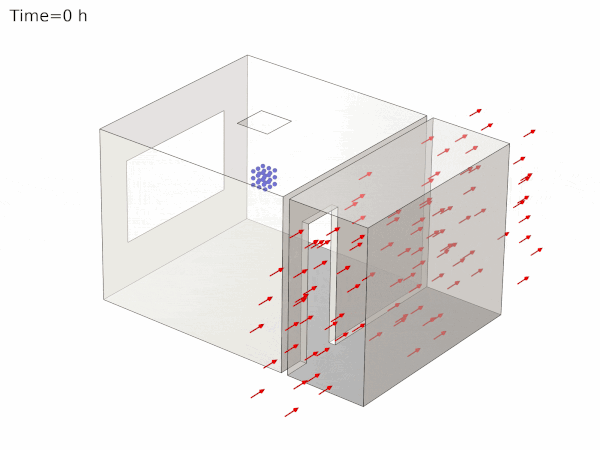Keywords
CFD, ventilation, air flow, particles, convection, virus, COVID19
Context / Goal
Air quality control within closed environment is well known issue, but the topic gained massive interest in 2020: air is a resource shared by the occupants which composition is affected by the content of our respiratory tracts. Consequently, this content is emitted by our organism while one breathes, sneezes and talks. The emissions are constituted of gazes (such as CO2) but also water droplets and micro-droplets. Because of their size, the smallest of them can remain for hours in the ambient air without reaching a landing surface. Unfortunately, they contain the bacterises and viruses located in our airways and the droplets become the vehicle that can transport them from one organism to another.
The need for an efficient and regular ventilation becomes obvious to limit the contamination between the occupants of a same building. Modelling allows for comparing qualitatively the efficiency of different scenarios of room ventilation: windows, doors, and mechanical ventilation.
SIMTEC's Achievements / Results
SIMTEC proposes a simulation of the air flow through the solving of Navier-Stokes equation in the stationary and laminar regime.
The following scenarios can be studied with the simulation:
-
Mechanical ventilation and open door
-
Draught in the adjacent hallway, with an open door and closed window
-
Draught in the adjacent hallway, with open door window
This study indicated that a draught in the adjacent hallway is not sufficient to renew the air from a room. While the air within the room is agitated by the flow in the hallway, it is not renewed and the exchanges between the hallway and the room are limited. The other ventilation methods are more efficient if the incoming air is not stale air: this confirms the general recommendations on regular airing of the closed building through as many windows as possible. This is valid whether the building is equipped or not with mechanical ventilation.


